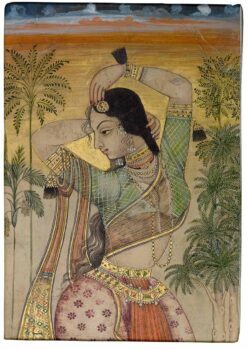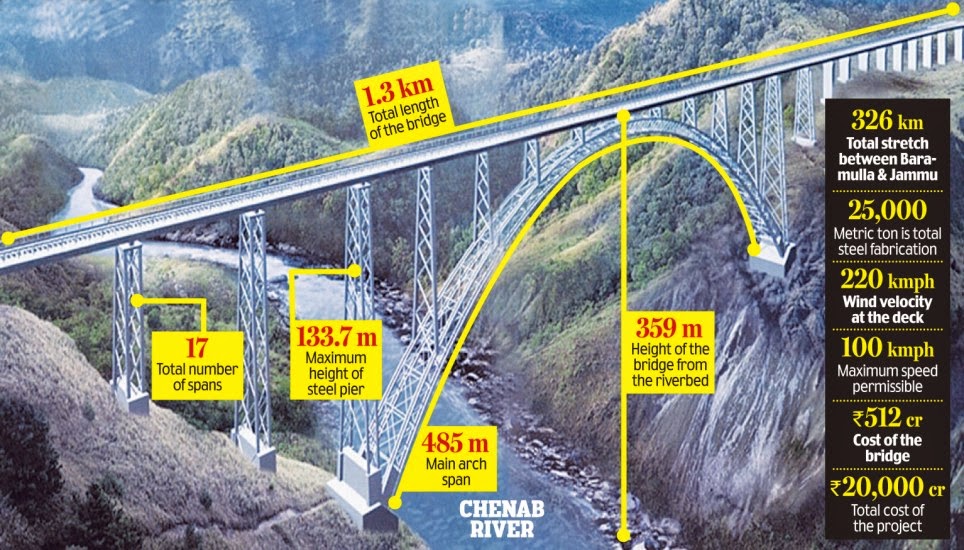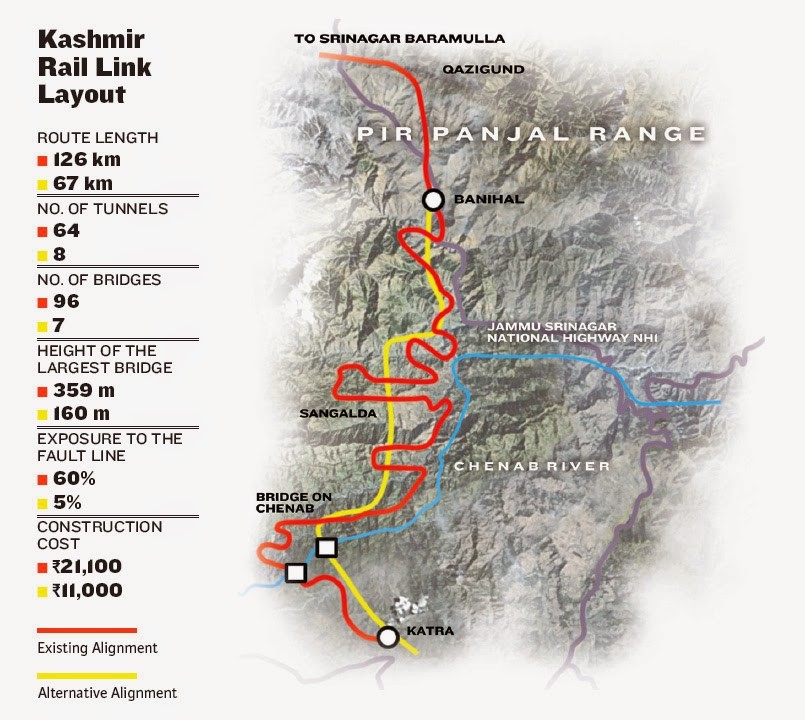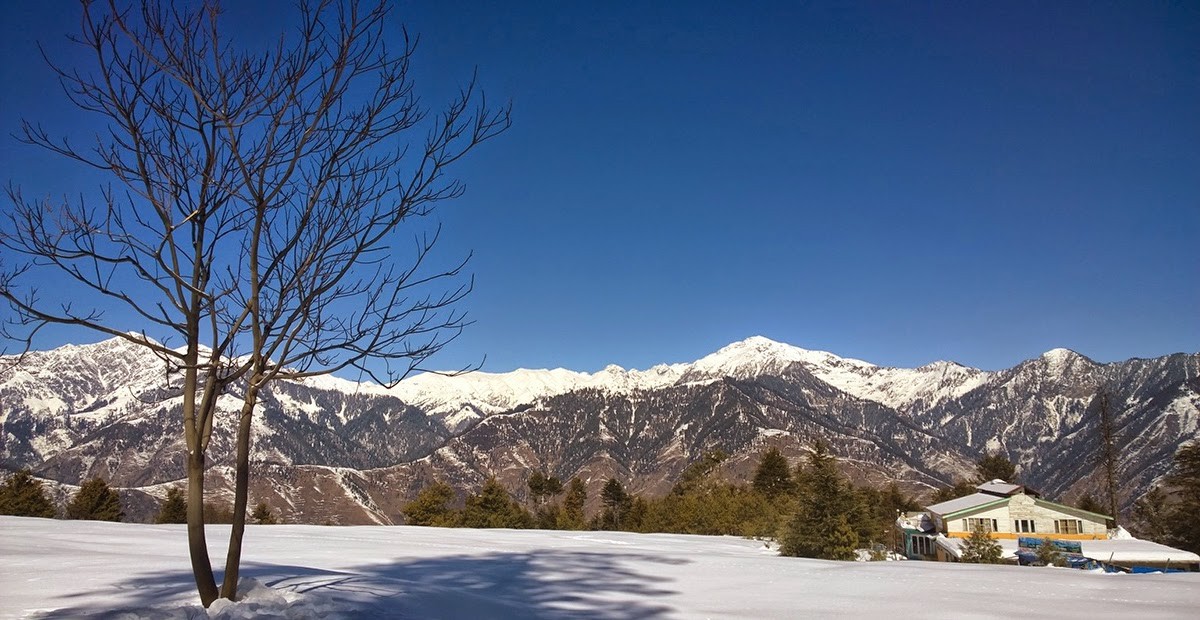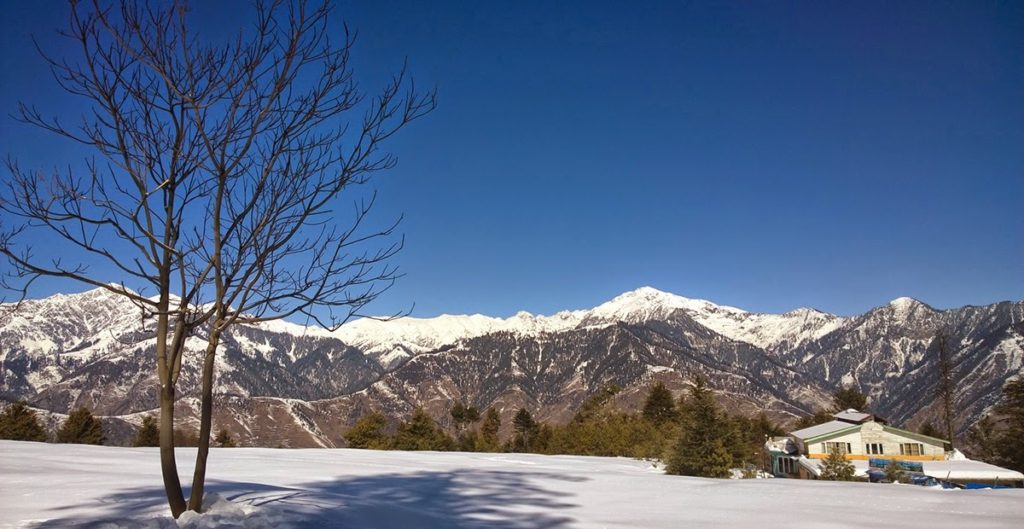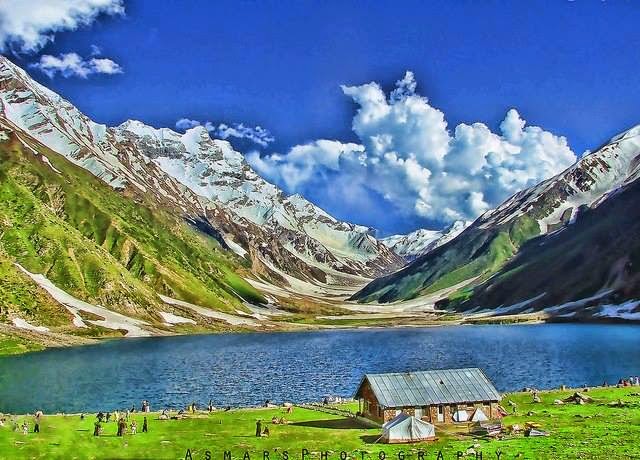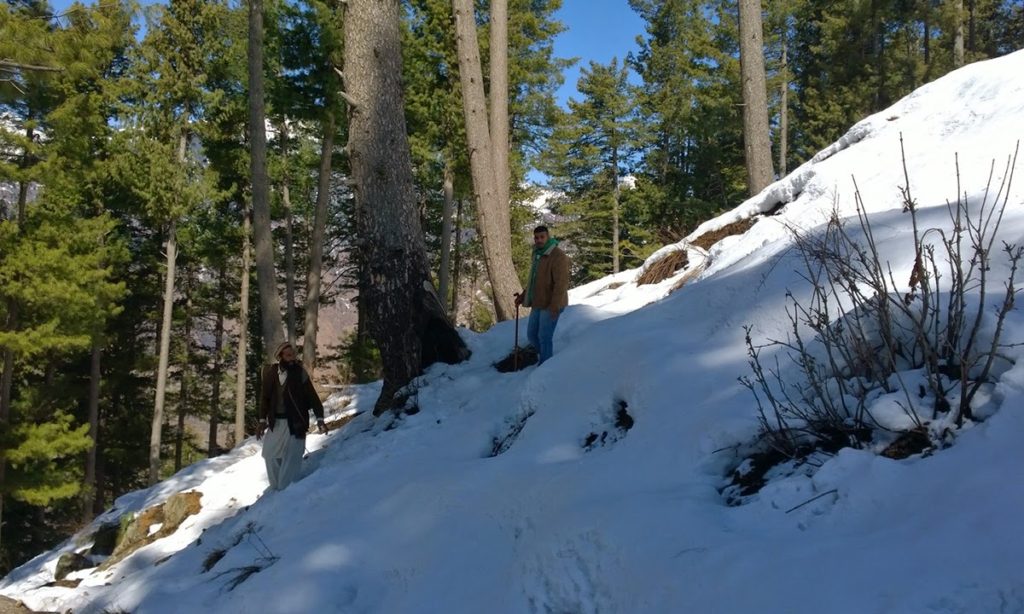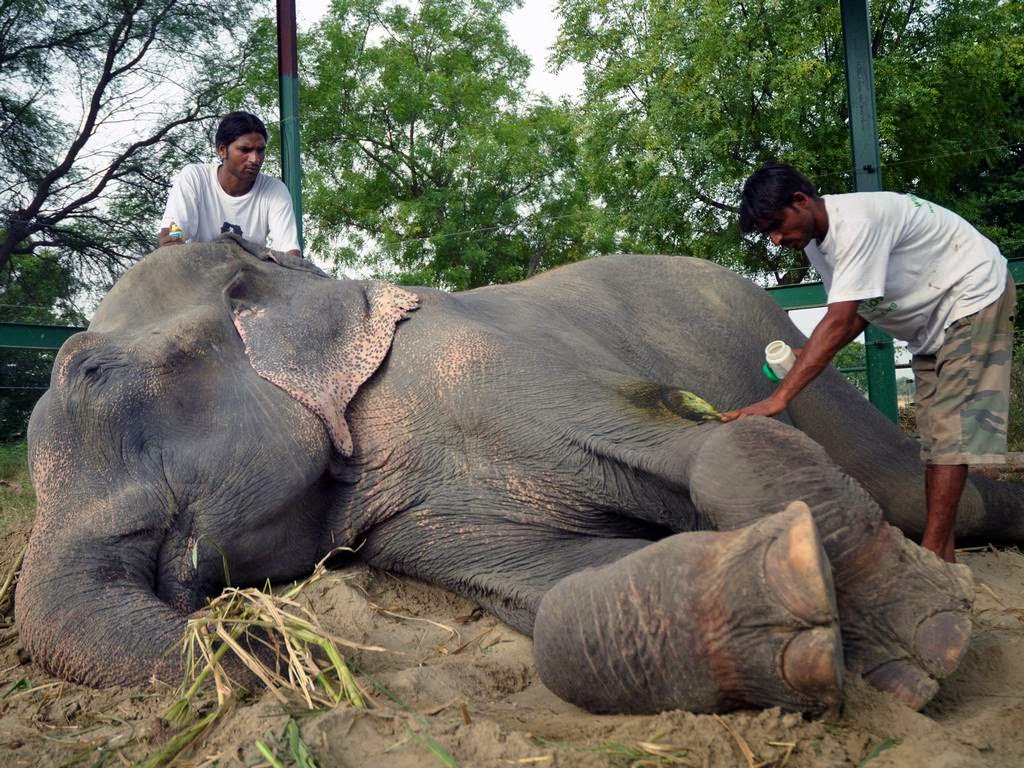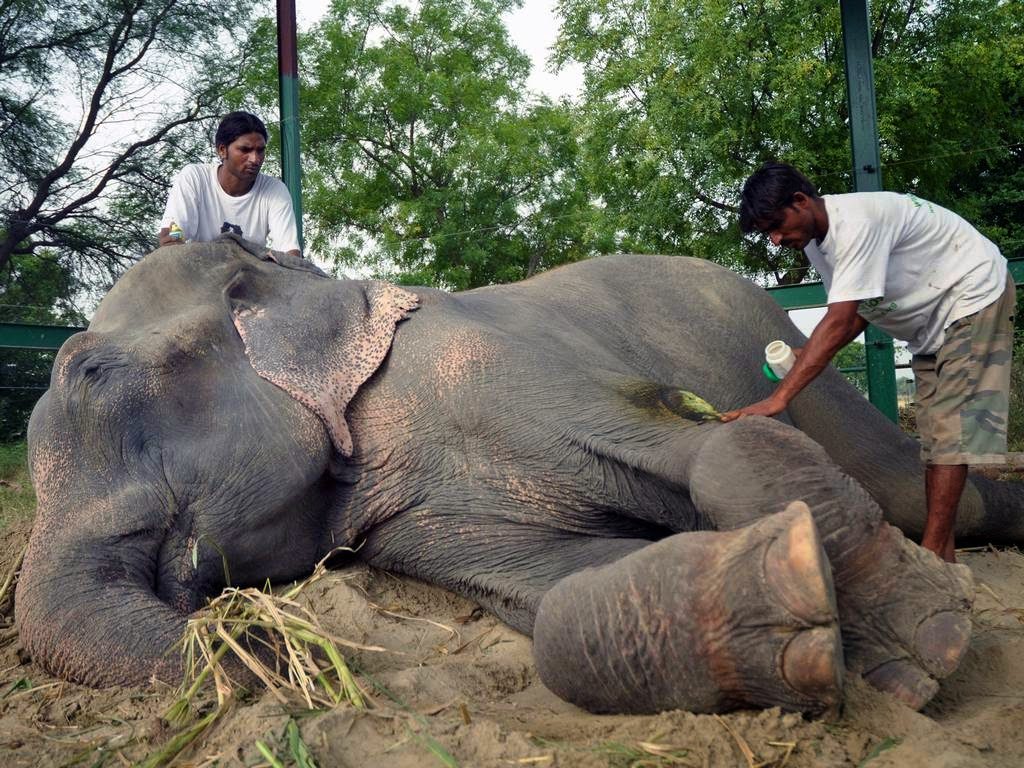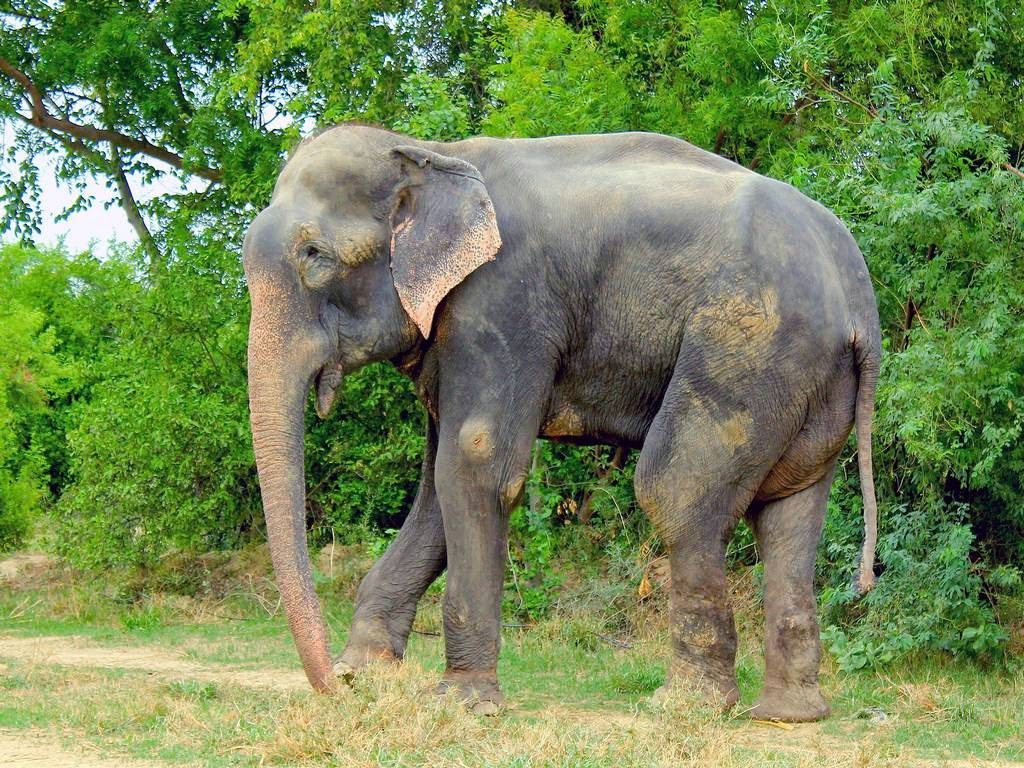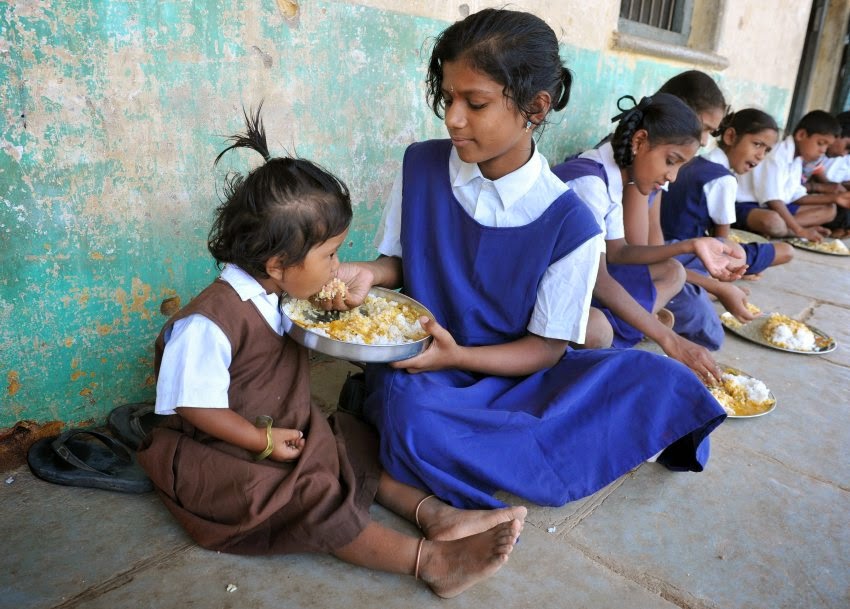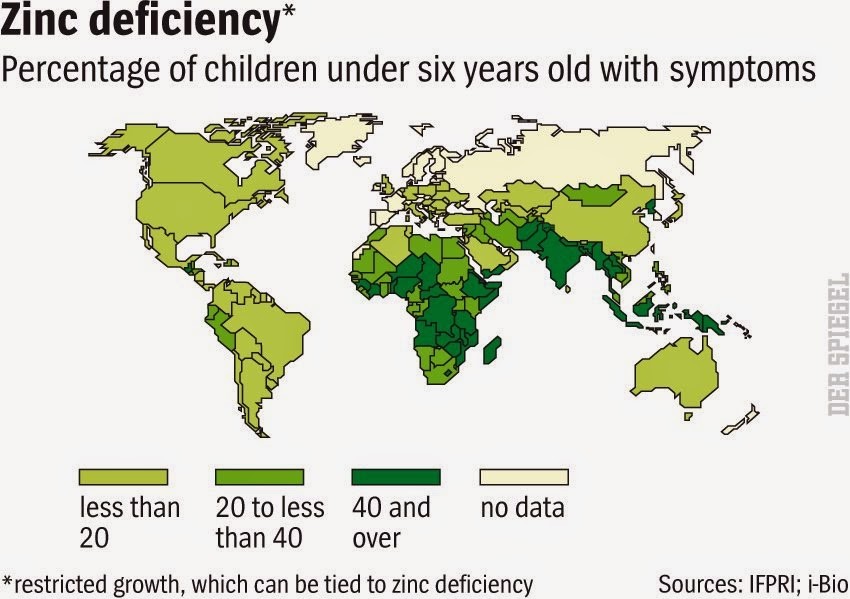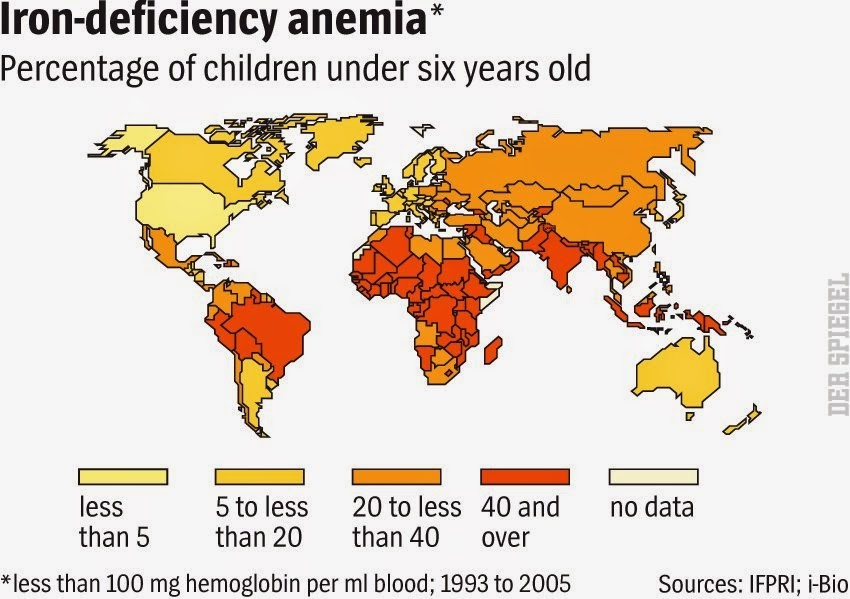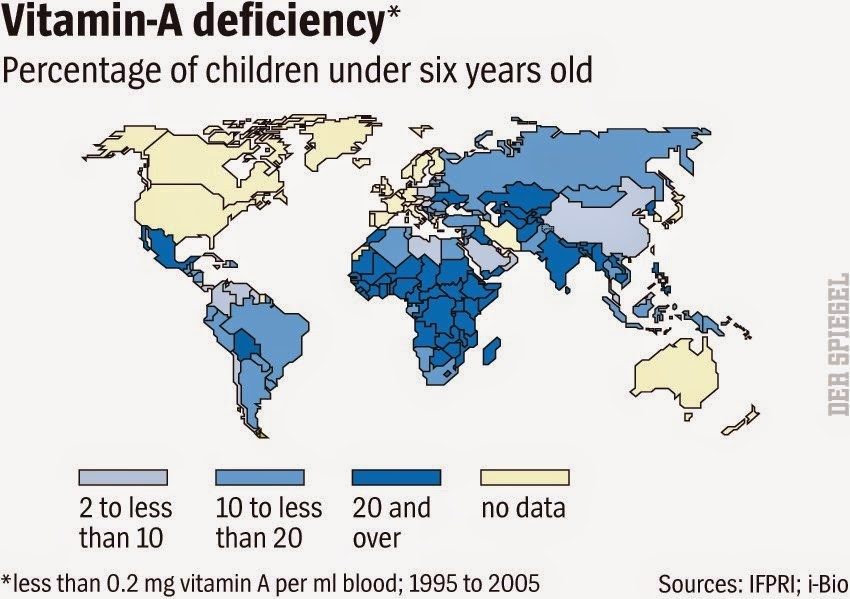From Hamid Hussein sahib. His (very polite) comments are in red.
Read and weep.
July 6, 2014
Former DG ISI Lt. General ® Asad Durrani is one of cerebral senior officer. He is active academically and writes about important issues although I have a different take especially regarding Pakistan’s Afghan policy. This is one of his fairly extensive piece with my comments in red and italics.
Hamid
Strategic Decision Making in Pakistan
Abstract
Change is the only constant in life. Decisions once made are therefore constantly reviewed and modified to keep pace with the changes. If the subject is strategic in nature, it would obviously need a sound system to make and change decisions- and indeed to implement them. How Pakistan acquitted itself with this evolutionary process is the theme of this paper. With the help of a few case studies, it briefly describes the environment that influenced decisions, attempts to establish a pattern, and highlight if there was an odd exception.
Introduction
Having been involved or closely associated with the events, this paper is essentially the perspective of a practitioner. It argues that in volatile environment, initial decisions are less a reflection of long-term strategy and more a response to a development, often an unexpected one. Initially, only a ‘core group’ is involved. As the situation evolves, adjustments and course corrections are made and usually the desired outcome has to be scaled down or revised. As illustrated by various examples, often the unintended consequences are hard to predict. Even when some of them can be, the impulse to achieve the main objective overrides remedial measures that may be seen as detractions, or too complex to execute.
Afghanistan after the Soviet Invasion
When the Soviet Union invaded Afghanistan in December 1979, with India in the East and now an unfriendly superpower in the West, Pakistan found itself, so to speak, between the jaws of a nutcracker. Since there was no reasonable chance of any outside help to get the occupation vacated, General Zia-ul-Haq, the Army Chief as well the President at that time, with few of his aides decided to provide covert support to the Afghan resistance. Two years later, when the US and some other countries joined in with substantial assistance, the odds improved but the prospects of a Soviet withdrawal remained remote. Thousands of volunteers from all over the world arrived ostensibly to take part in this Jihad, but since most of them had their own scores to settle back home, they had come essentially to learn the art of resistance. Their governments were indeed relieved to get rid of them in the hope that they would embrace martyrdom. (Even if all agree that it was right thing to support Afghan resistance, on this specific issue the question is whether military leadership thought about the consequences of this approach and to prepare for some of the side effects. This is not based on hindsight vision but common sense. By late 80s and early 90s things were pretty clear. The horrific violence perpetrated in Egypt and Algeria was inspired and led by these veterans of Afghan theatre. )
With the induction of STINGER anti-aircraft missile system that the US was initially reluctant to provide, lest it fell in the Soviet hands, the tide started to turn. Soon thereafter, Gorbachev’s assumption of power and the ensuing change of policy expedited Moscow’s withdrawal from Afghanistan.
Zia was opposed to signing the 1988 Geneva Accord that outlined the parameters of withdrawal unless it provided for an all-inclusive interim government. No one — the US, the Soviet Union, the Mujahedeen, even the Junejo led government in Islamabad — showed any interest in this proposal. Similarly, there was no agreement on freezing military support to the warring Afghan factions. An internecine war over the throne of Kabul following the Soviet withdrawal was now on the cards.
In February 1989, the ISI persuaded the seven major resistance parties to form a coalition, called the Afghan Interim Government (AIG). (The major flaw on part of Pakistani thought process was lack of understanding Afghan history and culture and tectonic shifts in Afghan social structure that was brought by war. Pakistan was a major player in breaking the humpty dumpty of Afghanistan and we all know that state no matter how weak or fragile once broken is very hard to put back. For the uninitiated, two examples will suffice. In 1980 Islamic Conference in Taif, Saudi authorities had to put the whole Afghan delegation in prison for several hours as quarrelsome parties even could not agree on who would speak at the conference. Later, the whole Afghan hursuit brigade of holy warriors was literally pushed inside the holiest place of Islam; the grand mosque of Mecca to swear on holy book not to fight among themselves. The moment they landed back in Afghanistan, they started to shoot and their indiscriminate bombing made citizens of Kabul murmur that such damage was not done to the city by even Soviets. If Pakistan thought that it could manage Afghans, it was a delusion.) It was expected that Pakistan would recognise it, and with some others following suit the AIG could replace the Soviet legacy in Kabul-the PDPA regime led by Najeebullah. (The Soviet legacy in Kabul was unacceptable but its replacement; AIG put together by Pakistan, financed by Saudi Arabia – Saudis provided $25 million cash to distribute among quarreling Afghan commanders gathered at a Rawalpindi hotel so that they could agree on a cabinet and armed by everyone and his cousin including Americans and Israelis was kosher. There are several narratives of the story.) The Foreign Office however was of the view that for recognition the “interim government” had to have a foothold within Afghanistan. That led to the Jalalabad operation that failed as the Mujahedeen were not trained for set-piece battles. After the fiasco, Prime Minister Benazir Bhutto ordered a review of Pakistan’s Afghan Policy. As DGMI, I was part of the committee that included the Director General Afghanistan from the Foreign Office. The committee’s main recommendation was that the AIG had to expand its political base. To follow up, some efforts were made to contact the Afghan Diaspora, King Zahir Shah in Rome and the Regime in Kabul. Only the Peshawar based faction of Hizb-e-Wahdat, a Shiite-Hazara party, could be persuaded to come on board.
In early 1991, Benon Sevon, the UN envoy for Afghanistan, offered to convene a representative assembly. The AIG endorsed the proposal, which was also approved by the Government of Pakistan in January 1992. Before the initiative could make any headway the PDPA regime collapsed in March. In an emergency meeting in Peshawar, the AIG reached an agreement (the Peshawar Accord) on how to fill the vacuum in Kabul. However, it was practically scuttled when Ahmed Shah Massoud won the race to Kabul beating his rival Hekmatyar and presented a fait accompli. Six months later, Pakistan tried to restore the balance (the Islamabad Accord), but to no avail. (That reminds one of the Soviets reaching Berlin ahead of their western allies in the Second World War, with equally grave consequences). The experience probably led Pakistan to plead with the US not to let the Northern Alliance enter Kabul in November 2001.
Having underwritten the two Accords in the belief that only a consensus could usher in stability in Afghanistan, Pakistan was obviously unhappy that the Massoud-supported-and-Rabbani-led government did not abide by their rules. Its subsequent support for the Taliban however had other motives. The Pashtuns were finally coming together and the militia was rapidly gaining ground. More importantly, only the Taliban seemed to be in a position to reunify the country; Pakistan’s second most important objective (a grand reconciliation between the major Afghan factions was always the first priority). It almost worked. When the Taliban were ousted in the U.S. led invasion post 9/11, they had brought most of the country under their control.
Pakistan’s decision making during the last three decades of the Afghan imbroglio was influenced by the developments in Afghanistan, the external environment as it evolved, and indeed internal compulsions.
a. The initial objective, “vacation of Soviet occupation”, was achieved when the Soviets withdrew. The subsequent aim:“help form a broad based government to restore unity and stability in Afghanistan”; was yet to be fulfilled when the country was invaded, this time by the US.
b. Hands-off policy after the Soviet withdrawal was an option that was considered. Arguments against it ranged from ‘mission not yet accomplished’ to ‘continued involvement of other countries’.
c. The genuine Afghan hands never suggested planting a pliant or even a friendly government in Kabul. Any regime acceptable to the Afghans would have served our interests- as they did before the Soviet Invasion. In both our two wars against India, the governments in Kabul offered to ensure peace along the Durand Line. That helped us move all our forces to the eastern front.
d. The wars in Afghanistan had some unintended consequence for Pakistan. Influx of refugees could not be prevented because of porous borders (possibly also on political and humanitarian grounds), and flow of weaponry and drugs because of institutional disconnect.
The 1989 uprising in Kashmir
Pakistan’s decision to send infiltrators to Kashmir in 1965 had not been adequately thought through. The assumption that it would not lead to an all-out war with India turned out to be a huge embarrassment. The real damage however was the Kashmir is’ loss of faith in Pakistan’s resolve to help their freedom struggle. In the aftermath of the 1971 debacle and later due to the war in Afghanistan, Pakistan was neither keen nor in a position to pursue the Kashmiri cause. After the Shimla Accord, the Kashmir issue was virtually frozen.
The uprising in January 1990 thus took us by surprise (I was DGMI at the time) – perhaps also because the unrest was atypically led by the urban youth: educated but unemployed. By the time we learnt more about it, Benazir Bhutto, the then Prime Minister, was still convalescing after the birth of her second child. The first presentation was therefore made to President Ghulam Ishaq Khan (GIK). The PM was represented by Nusrat Bhutto, the Senior Minister. At that nascent stage, except for the need to watch further developments no major decision was advised.
Back in office, Bhutto tasked the Foreign Office, the ISI, and the MI, to brief representatives of all political parties on the uprising. Some deliberations indeed took place closed-doors. The broad consensus was that the turbulence would soon fizzle out and except for some diplomatic activity no other action was warranted. Of course the intelligence agencies had to keep watch and maintain contact with those who had crossed over from the Indian held Kashmir, some of them for military hardware and training. In the absence of any government directive, only some private groups provided limited help. The unrest however picked up pace and became a movement. Indian crackdown in the valley was accompanied by a military buildup on Pakistan’s borders. Since most of the heavy ordnance had been left behind in peace locations, it was clear that India was not mobilising for war and the move was more of a political act to demonstrate firm action. We therefore decided to keep our forces in the barracks.
In June 1990, Robert Gates, the then Deputy National Security Advisor in the US (later Director of the CIA and Secretary Defence) visited both the countries to plead restraint. He did not quite expect the relaxed atmosphere in Pakistan. The Prime Minister was visiting North Africa and the President, who knew better, did not take Gates’ concerns about the likelihood of a nuclear holocaust seriously. Indians however obliged him by pulling back from the borders and as quid pro quo demanded that the US dissuade Pakistan from any support to the militancy in Kashmir and consider declaring it a state sponsoring terrorism. Now that the Cold War was over and Pakistan no longer a frontline state, the US agreed and faithfully followed up.
In fact, it fitted nicely with the United States’ new Pakistan Policy. Shortly thereafter, Pressler Amendment was invoked on 1 October 1990, all aid frozen, and charges of abetting fundamentalism and terrorism were added to the existing list of nuclear deceit and drug paddling. The next three years saw a remarkable low in Pak-US relations. It was essentially President Khan’s experience and the resolute support by the civil and military establishment that helped Pakistan tide over that period. All this while, the resistance in Kashmir continued to intensify and because of that so much pressure was generated on both sides of the LOC that the ISI could no longer be kept out of it; primarily to ensure that the turmoil did not spin out of control and ignite a war with unpredictable consequences.
A people’s movement seldom finds united leadership right at the outset. There were over a hundred groups in Afghanistan during the initial years of the jihad against the Soviets. The ISI reduced them to seven parties and subsequently brought them under the AIG’s political umbrella. Having learnt from Vietnam that Giap needed a Ho Chi Minh, and from Afghanistan that an armed struggle must ultimately find a single focus, the ISI persuaded the Kashmiri resistance to form a supreme council. So was the Hurriyet (THK) born.
Like the AIG, the THK too did not quite serve the purpose. A few groups remained outside its folds, some others left it. Micromanaging a liberation movement is a tough call and this one was a particularly tall order. The Indo-US nexus was powerful and Pakistan suffered from institutional instability and lack of political cohesion. Consequently, under pressure it committed a cardinal sin: it left the Hurriyet to its own designs.
Fighting the state is a complex undertaking. If it was directed against a hard state like Russia, or if the stakes were high and humanitarian considerations low — like for India in Kashmir — the reprisals can be brutal. The resistance must therefore be planned for the long haul. Left to eager or fanatic streaks, it does not pay enough attention to non-military means that eventually matter more, and soon burns out. The Mujahedeen and the Taliban survive for decades because they stagger their military operations in time and space. On the other hand, the attrition rate of the Punjabi Taliban in Afghanistan, always on the offensive, is very high. The same fate is what befell the Kashmiri resistance. It may have lasted longer than we expected but failed to consolidate on political front and in due course its armed element lost momentum. It still served a purpose: it persuaded both India and Pakistan to seriously find ways to at least manage this chronic conflict.
In 1997, with I.K. Gujralin Delhi and Nawaz Sharif in Islamabad, the climate was becoming more conducive for peace. Though not yet proven but still strongly suspected nuclear capability of the two countries must have induced a sense of urgency. The formula that the two countries invented, famously called the Composite Dialogue, wisely kept the intractable issue of Kashmir on the backburners, to first improve the environment before it could be addressed. Despite being rocked by the Kargil war (another venture launched without envisaging the endgame), the coup of 1999, the failure of the Agra Summit, the attack on the Indian Parliament in December 1999, and the 2005 carnage at Mumbai, the concept of composite dialogue has continued to underpin the bilateral relationship. It may still not lead to any strategic breakthrough because of the historical baggage, the dogmatic establishment culture and weak political leadership. Moreover, the turmoil in Pakistan and its relative power deficit vis-à-vis India have led Delhi to believe that it need not make any compromises that would substantially change the status-quo. Even the symbolic CBMs on Kashmir, for instance the bus service between the two parts that was meant to sign the seriousness of the peace process, were undermined by India when it suspected that the improved environment might acquire a dynamic of its own.
During the first fifty years of its existence, Pakistan’s policy on Kashmir lacked a long-term perspective. Its decisions were dictated by events and thus hardly strategic. When the Valley erupted in the early 1990s, Pakistan’s responses took an evolutionary course. Undergoing a state of transition both internally as well as with the end of the Cold War geo-politically, Pakistan’s decisions were tactical in nature. It was only after another transition, to the status of a nuclear weapon state, that the issue was brought within a strategic framework.
Pakistan’s inadequacies did contribute to the movement’s setbacks. However, having lived under occupation for long years the Kashmir is continued to covet freedom from the Indian yoke. They remain alienated and sporadic flare-ups were still likely. Nevertheless, because of the internal turmoil and a war raging on its western borders, Pakistan’s best option remains plodding along within the parameters of the conflict containment formula; perhaps a more appropriate description of the Composite Dialogue. (In one sentence, Pakistan’s ambitions regarding Kashmir are not matched by competence in handling such tricky matters. In 1965, it launched major operation in Kashmir without developing internal cohesion and consensus and in the process lost East Pakistan. Psychological separation occurred in 1965 as even patriotic Bengalis scratched their heads that West Pakistan leaders risked half of the country with 55% population to help few hundred thousand Kashmiris. Pakistan picked a fight with India on western front while East Pakistan surrounded on three sides by India was allotted one infantry division and a squadron of air force. You cannot send any more powerful signal to your citizens what you think about them. In 2014, Kashmir is a moot point and Kashmiris may have to find their own way as internal threat to Pakistan trumps everything else.)
Dismissal of Benazir Bhutto’s First Government
When Benazir Bhutto (BB) became the Prime Minister of Pakistan in 1988, her victory was rightly acclaimed as a momentous event. It was not merely that a conservative Muslim country had elected a woman as its leader, but more the disbelief that in the real world too such happy endings were possible. The fables don’t have it any better: a popularly elected leader removed from power by a military dictator and hanged; his young daughter returns after years in exile; and with the help of the down-trodden takes back her father’s throne. In the real world, however, hardly anyone lives happily thereafter. BB had no intentions to; and despite the fact that a good number wanted to see her survive the mandated tenure. Contrary to common belief her gender usually worked in her favour. Shortly after she was sworn-in the Chinese Ambassador called on Aslam Beg, the Army Chief, and told him that BB needed help. Armed with millennia of hindsight these Chinese had enough foresight to fear that the combination of a vicious opposition, BB’s inexperience, and the feudal baggage she carried, were a recipe for disaster. Little did he know that the help was already underway?
The first paper sent to her from the GHQ proposed the formation of a national security advisory group (NSAG). Though mindful of the aversion the civilians have for the concept of a national security council (NSC), which they consider perpetuation of military rule by other means, the proposal was not a camouflage under another name. It in fact recommended the engagement of a civilian body with national security. On defence matters, the only brass it needed to consult was the harmless Chairman Joint Chiefs of Staff Committee. The paper did however suggest that in addition to experts and academics, representatives from political parties should also be included. (This is the accepted norm for national security and helps to streamline and strengthen the decision making process. My only comment is that GHQ is very happy to send such great ideas when civilians are in charge but never bothers to take their own prescribed medicine when they are at the helm of the affairs. They prefer an echo chamber when they are running the show.) Other than providing the government with multiple options and opinions, this arrangement could dissuade the opposition (as it would be part of the policy discourse) from exploiting national security issues for their political ends. The paper never saw the light of day.
In September 1988, an ethnic carnage in Hyderabad had taken nearly a hundred lives. After the October elections, a coalition between the PPP and the MQM — two parties that represented the feuding communities — promised some mending of fences. The optimism lasted a mere hundred days. The ruling PPP intended to concede no more than the bare minimum and what the MQM demanded (the famous 54 points), no government could concede. Within a few months, Sindh was back in turmoil. This time the mission to help BB was led by President Ghulam Ishaq Khan. In March 1989, he went to Karachi to take stock of the situation and to advise the Prime Minister. One group that he consulted consisted of the Army Chief, the DGISI, and me as the DGMI. There was consensus that the PM should extend her stay in the Province and personally lead the peace talks with the MQM. BB’s reaction to the presidential advice was made amply clear when she promptly headed back to Islamabad.
Bhutto was understandably uncomfortable with Hameed Gul heading the all-powerful ISI. The General was not only one of the better known legacies of Zia, but also a self-proclaimed godfather of the IJI, a coalition of parties opposed to the PPP. The failure at Jalalabad provided just the right pretext to remove him from the country’s top intelligence job. (COAS also showed what military leadership thought about their prime minister. Hameed Gul responsible for herding the right of the curve political parties with bribes and threats against the prime minister was given the coveted post of Corps Commander of II Corps based in Multan. General Beg being out of the loop of Afghan adventure managed by a very small circle around General Zia relied heavily on Hameed Gul after Zia’s demise. Hameed Gul was a ‘plucky’ armor officer strutting around. Later, some would joke about Jalalabad fiasco that in three decade long military career, he was only once asked to plan a military operation and the results are for all to see. GHQ rewarded him for this stellar performance with a third star and coveted command of II Corps. The best summary was provided by Afghan ruler Najibullah. Someone close to him asked him what happened in Jalalabad. He responded, “Pakistan had a great plan. They only missed a small thing. They never thought about what we will do?” This one sentence summarizes all such adventures from 1965, Afghan policy and Kargil. Pakistan needs to ponder more about what others can do?) In his place she appointed Lt Gen (retired) Shams-ur-Rehman Kallue. It was the first time the post was held by someone not on the active list of the Army.
The selection of the DGISI is the Chief Executive’s prerogative and according to the rules of business he, or even she, does not have to belong to the Armed Forces. GHQ’s claim on this post is based on the argument that since the organisation was mainly manned by the Khakis, its head should be a serving general. Another reason may well be the Army’s larger than life role in the country’s polity. General Beg, who as per the practice in vogue had offered a panel of officers for the PM to choose Gul’s successor, was obviously miffed. (The end result was that everyone at ISI well aware that the fountain of power and promotions was GHQ and not Prime Minister house, essentially quarantined their own DG and in the process poor SR Kallu earned the nick name ‘No Clue Kallu’.) Those who used to warn that that to get even for the past indignities, BB once in power would wreak havoc on the military, were now in full cry. A running battle between the government and the Army’s high command followed, rapidly engulfing the Presidency. The distribution of power in the political system and our aversion to abide by its algorithm made it inevitable.
After the 1985 general elections, Zia-ul-Haq extorted the house to grant him (now an elected president) the fiat to dissolve assemblies and choose the service chiefs. Famously known as the eighth amendment GIK inherited these powers. Armed with it the President was an important pillar of the new power matrix; the Prime Minister as the chief executive and the COAS as the prime arbiter, being the other two. The trio was called “The Troika, even though it never acted as one. In its original Russian sense, the troika was a chaise driven by three horses in the same direction. Our bargain was designed to rein them in. The army chief now did not have to break loose and take the country with him; if the prime minister ran amok, he or she could be pre-empted or prevented; and the president in any case had nowhere to go. It was not a bad idea considering our previous (and subsequent) experience. Had it worked, it would not have had the mobility of a troika, but at least the stability of a tripod. It was workable provided the three actors accepted the limits of their power.
The Army made the first move to test these limits. The Government has the right to make or review policies. After the Soviet withdrawal and the Jalalabad fiasco, its decision to have another look at our Afghan policy was therefore reasonable. I was a member of the review committee that included Ashraf Jehangir Qazi, DG Afghanistan from the Foreign Office. General Beg did not like the review and swayed the PM to make him the chief policy coordinator. BB agreed, probably to let the Army dig itself deeper in the Afghan hole; but in public perceptions the PM had lost a round to the GHQ.
Soon thereafter, Bhutto upped the ante by asserting that though the President could appoint the Chairman Joint Chiefs of Staff Committee, his retirement was the PM’s prerogative. Now, no one ever told GIK that what he believed to be his domain was in fact not his, and got away with it. In this case there was another, graver, reason that BB was not going to get her way. Aslam Beg was convinced that the Chairman was only the test case, to be followed by the ‘real thing’- him. The time had come to give the lady a taste of her own medicine!
General Beg was not very fond of the MQM or its methods. As the senior most mohajir in the country’s hierarchy though, the MQM was always game to his signal. I am not sure if he gave any, but in early September 1989 the MQM’s decision to part ways with the PPP came at the heels of the PM’s latest attempt to rock the balance of power. The loss of an important coalition partner reduced the government’s majority in the National Assembly to 12. The Opposition led by Ghulam Mustafa Jatoi decided that the time was now ripe to wrest power from the PPP through a motion of no-confidence. In our assessment it seemed unlikely that it would succeed. And it was a sobering thought. BB’s supporters in the Parliament knew that the mighty Army wanted it to be carried, and also that the wielder of the 8th amendment would be gratified if it did; but none of them was willing to walk the gauntlet to vote for the motion. Eventually the ruling party walked away with one from the Opposition (Anwar Aziz), and the motion fell short by 13 votes. BB had won against the other two, supposedly more powerful, members of the Troika.
It was now the President’ call. That he did not like Ms. Bhutto was well known; a sentiment exacerbated by the lady’s disrespect for decorum. Even then it surprised us when he got himself in a squabble with the PM that he could well have lost.
Towards the end of 1989, I was asked by General Beg to go see the PM and dissuade her from taking a contentious matter to the court. Apparently, the President had ignored some of her recommendations for appointments to the higher judiciary. She probably had a good case there and having defeated the no-confidence motion on the floor of the House, was now raring for a constitutional showdown. Air Chief Marshal Hakeem-Ullah, the then Chief of the Air Staff, was also there on the same mission. A compromise formula was worked out and BB agreed to stand down in the (vain) hope that her gesture would help get the Army and the Presidency off her back. But that is not how politics works, anywhere.
The turn of the year brought a God sent pause in these running battles. Ms. Bhutto was expecting a child and in the true chivalrous tradition of our society, her antagonists waited till the baby was safely delivered. The storm that followed this lull was unleashed by the MQM in Karachi on 7 February 1990. Scores of people were killed. The countdown for BB-1 had started.
When Rajiv Gandhi, the then Indian Prime Minister, visited Islamabad in 1988, we learnt that BB had assured him of cooperation against the Sikh uprising raging in the Indian Punjab (she later conceded that she had helped India control the Sikh insurgency). BB had obviously acted without consulting all relevant organs of the state. A few months later, during the PM’s visit to the US in June 1989, the CIA gave her an “unprecedented” briefing on Pakistan’s nuclear programme. Reportedly, she was shocked and stated that that at home she had not been adequately briefed. Some gave her the benefit of doubt since feigning ignorance under the circumstances was the sensible thing to do. However, on her return it became quite clear that the Prime Minister had taken the CIA’s briefing rather seriously. It was time the Army Chief invited the Prime Minister for an exclusive briefing on Pakistan’s core security issues. She accepted but without any prior notice arrived accompanied by Robert Oakley, the American Ambassador to Pakistan. Of course we could not make the presentation that was originally planned.
How the Army was to be employed in aid of civil power to combat ethnic warfare in Sindh became a contentious issue between the government and the GHQ. The government wanted the Army to operate under Article 137 of the constitution, restricting its room for action. General Beg asked for more freedom under Article 242, a demand made famous by his statement that his troops “would not chase shadows”. The executive indeed had the final word. However, when the list of miscreants was received — a list with only MQM names on it — the intentions became clear. The government wanted to hound its political opponents with the help of the Army. The military high command decided not to oblige.
In June 1990, the PPP government in Sindh ordered a raid on Pucca Qila, an MQM stronghold in Hyderabad. The timing was curious. Not only was the PM out of the country but so were the COAS and the Karachi Corps Commander. Moreover, it was the first time during this phase of unrest that the provincial administration did not coordinate a major operation with the Corps HQ. The Army intervened and the bloodbath was prevented. Both the President and the Army Chief now agreed that the dispensation was no more working. The next steps were to be decided by the President.
In mid-July I learnt, purely by chance, that some of the President’s men were working full steam on the dissolution of the National Assembly. When I informed General Beg he did not seem too happy. It had been less than two years that the democratic process was restored with much aplomb and applause. As the acclaimed godfather of this restoration, Beg had hoped that the President might try something less drastic than invoking the much dreaded 58.2(b). After a quick meeting with GIK, he confirmed that the die had been cast. The President made the announcement at 1700 hours on the 6 August 1990.
This was a decision many powerful groups had not desired, but when it was taken most of them fed up with the perpetual turmoil and no governance, heaved a sigh of relief. The President may not have liked BB’s impudence but he did try to guide her. The Army was generally sympathetic. A poll conducted in a formation (not the done thing) upheld the right of a woman to become the head of the government in an Islamic country. Indeed at one stage we not only considered her a security risk but also had serious misgivings that she wanted to wreck revenge on the Country (or the Army) for what was done to her father. Even then, Beg’s dismay when he learnt about the presidential decision was shared by a good number in the brass. Did we become impatient? Probably! A few years later, the same team was prepared to forgive BB’s sins because in the successor government they were looking at a bigger disaster.
Nawaz Sharif’s First Stint as PM
The civil-military team that ushered Nawaz Sharif into power in 1990 was led by GIK. It used every trick in the trade to deny power to BB even in her home base, the province of Sindh. (We are missing an important piece of information where Military Intelligence was directly involved. I don’t know whether details are now available or relevant documents declassified in Pakistan but I happened to see some details regarding activities in Sindh province; traditionally stronghold of PPP. Just two weeks before dismissal of Benazir government on August 06, 1990, Brigadier Hamid Saeed Akhtar then commanding an artillery brigade in DI Khan was transferred to head MI section of Sindh province. With anti-PPP interim provincial government in place, on September 12, 1990, 140 million Rupees siphoned through Mehran Bank were deposited in six bank accounts managed by Brigadier Hamid. This money was distributed among anti-PPP Sindhi politicians. MI does not come under the jurisdiction of President House but follows GHQ orders.) But one doubt that Sharif started to dismantle without loss of time was, that just because of this favour he would remain eternally beholden to them The two nominees of the President, Ijlal Haider Zaidi, the advisor on Defence, and SahibzadaYakub Khan, the Foreign Minister, were bundled out in quick succession. That the Kingmakers must be gotten rid of earliest possible, he had been taught; but that one did not have to pick all one’s battles right at the outset, he had failed to learn from his predecessor. With some unintended help from General Beg, Sharif was quickly on the warpath.
The US led war against Iraq’s occupation of Kuwait started on 17 January 1991 with the bombardment of Baghdad. A few days later, Mr. Zaidi as the Advisor on Defence sponsored a meeting of the Defence Committee of the Cabinet (DCC). Different views were indeed expressed, the one from the Army Chief being the most diverse. It is not unusual in a discussion but for someone used to hearing only one opinion, usually his own, it was nothing less than an affront. For that nerve alone, Sharif was not going to forgive Beg. The more urgent problem however was that because of a dissenting voice, the PM had to take a decision. For want of anything better, it was decided that Sharif should visit a few countries and plead for a ceasefire. On return he was very disappointed because no media was there to be enlightened on his peace mission. It had chosen instead to attend one of Beg’s favourite treatises on strategy- this time on Strategic Defiance. The PM requested the President to sack the Army Chief forthwith.
General Beg had undoubtedly acted improperly. Expressing divergent views in the DCC or propounding doctrines in military circles was one thing, but publicly adopting a collision course with the government was quite another. He later apologised to the PM but the bitterness continued. When the President was found unwilling to retire the General prematurely, the PM persuaded him to name the new COAS three months before Beg was to complete his tenure. That, Nawaz Sharif believed, would make him a lame duck army chief. (Army officers are not angels and many a times, personal ambitions trump other considerations. In a neat little version of their own byzantine intrigues, some subordinate senior officers at COAS office and MI directorate indulged in conduct unbecoming that is another interesting bedtime story.) Now, General Beg may have believed that he was ordained to usher in a new era guided by his strategic vision, but one instrument he was not going to use to realise this mission was that of a military takeover. The ceremony that marks an Army Chief’s formal handing over of command to his successor — one that had not taken place in Pakistan for a long time — was more important to him than delivering another “my dear countrymen” address.
When General Asif Nawaz took over as COAS on 16 August 1991, there was an audible sigh of relief from Sharif’s camp. But a minor matter still had to be taken care of: disposal of the incumbent DGISI, Asad Durrani. Since the head of the ISI serves at the PM’s pleasure, getting rid of me would not be a big deal. Asif Nawaz had already told the PM that it was time I commanded a division. In anticipation of the likely change, the Chief had even suggested a panel to the PM from which to choose my successor. Having suffered the Beg-Durrani axis for almost a year, Sharif was however unwilling to face another Army-ISI nexus. He conveyed to the Army Chief that with the transition in Afghanistan at a critical stage, the change in the ISI could be pended for a while.
No chief executive would be much at ease if the President was armed with the eighth amendment. The PM therefore reached out to Asif Nawaz in a bid to win him over to his camp. The Chief and his wife were invited to the Sharif’s family house in Lahore and offered a BMW as token of friendship. The General was deeply embarrassed and his inability to contain his sentiments led to plenty of stir. The PM’s camp responded to Asif Nawaz’s expressions of discontent by threatening to do a “Gul Hassan” on him. (Zulfiqar Ali Bhutto, as the President of Pakistan, had charged General Gul Hassan, the then army chief, of “Bonapartism”, and sacked him on 3 March 1972.) Not to be outdone, the Chief blurted out the episode in a formation commanders conference in February 1992. All present, over a hundred of them, froze for a while. A few eyes turned towards me. Luckily, I was too numb to show any emotions. I later asked Asif Nawaz as to what led him to this indiscretion. Not yet fully cognisant of its implications, he responded with his trademark nonchalance, “I just wanted to get it out of my system.” Perhaps he did, but in the process he had shaken the bigger system to the core.
Like his instincts, Asif Nawaz’ math was also “infantarian”: simple and down to earth. ‘In a troika two must prevail against the third’ was his political doctrine. Though not universally true (his successor persuaded both the President and the Prime Minister to step down), in the situation then obtaining it was pragmatic thinking. By supporting GIK, who was getting dismayed with the state of governance, Asif Nawaz believed that the PM could be shown the door. He however did not contemplate a military takeover for which the situation was unfavourable. Sharif on the other hand understood the outburst in the Army auditorium as an ultimatum.
The next episode to further widen the gulf between the Army and the government, this time with the President’s involvement, was the military action against the MQM. As the corps commander in Sindh, Asif Nawaz had gone through some bad patches: from the Hyderabad massacre; to the carnage in Karachi; and the raid on Pucca Qila. (There was civilian government in place at that time. Army was not responsible for law and order and could only be called to aid to civil power by civilian authorities. Sindh police raid on Pucca Qila occurred when Prime Minister, COAS and Karachi Corps Commander Lt. General Asif Nawaz were out of country. Army units were on their annual exercise. President Ghulam Ishaque Khan ordered army to intervene in crisis. Hyderabad station commander had to collect remaining soldiers in the cantonment on guard and other duties and head to Pucca Qila to order withdrawal of police.) MQM’s ways and Altaf Hussain’s messianic hold over the masses made him uneasy. He therefore was pretty excited when the organisation’s former militant aces, Amir and Afaq, broke ranks with its leadership to form a splinter group (the Haqiqis). He believed that this ethnic group could only be weakened from within.
On 19 June 1992 the Army with the help of Haqiqi informers raided some MQM facilities reportedly used for detention and torture of dissidents and opponents. The results were very revealing and within hours many high profile MQM figures were either caught or went underground. Since neither Nawaz Sharif nor Muzzaffar Ali Shah, the Chief Minister of Sindh, were very comfortable with their coalition partner, the operation had the tacit nod from the federal as well as the provincial government. It was however stopped in its tracks by GIK, the President and the Supreme Commander, but in this case acting primarily as the country’s last defence against Benazir Bhutto’s return to power in Sindh. He quickly grasped that the MQM’s loss was inevitably PPP’s gain. Once Nawaz Sharif understood the implication, his conclusion was equally inevitable: “the operation was the Army’s plot to dethrone him”. (This is a bit complex. Operation in Karachi especially against MQM was not carried out in a specified time frame and under one authority or government. It staggered from 1992 to 1994 when Nawaz Sharif, an interim government with President running the show and then second Benazir government was in power. During same time, COAS also died while in office with his boots on. It was also not a continuous operation but with many stops and detours. At various times, IB, MI, ISI, police, Rangers, some army units and army’s Field Intelligence Units (FIUs) were involved in the exercise. This is not surprising in view of deep mutual suspicions between civilian and military authorities and musical chairs of changing governments. Final operation was conducted in second half of 1994 and show was essentially run by a select group of police officers with very limited support from. My conclusion is based on lengthy interviews with some key architects of the operation.)
In the meantime, Asif Nawaz was toying with another idea: “if BB could raise enough turmoil on the streets, GIK might be persuaded to dismiss the government”. BB agreed and planned a long march to invest Islamabad in late 1992. The attempt was effectively scuttled by the administration that blocked all routes leading to the Capitol. Interestingly: the Army was asked to come to the aid of civil power, and this being a legitimate request, it lined up against a movement that had its chief’s couched support. Such were the contradictions in a system that did not follow its natural course.
A few months later, Asif Nawaz suffered a massive stroke and died within hours. On the 8th of January 1993, the General got onto a treadmill after breakfast and collapsed. The death of an army chief in Pakistan is a tectonic affair, even in normal times. This one happened when the three pillars of political power were in a state of critical imbalance. The events that followed are as illustrative of the genesis of Pakistani politics as perhaps any other.
Selecting an army chief in Pakistan is like launching a boomerang. If not done perfectly it can do immense damage, also to the launcher. Zulfiqar Ali Bhutto in 1976 and Nawaz Sharif in 1999 went deep down the ladder to find someone who they believed would remain obliged to them and spare their throne. They both regretted. GIK would also go wrong this time.
Choosing Asif Nawaz’ successor was indeed the President’s prerogative but given Sharif’s prior experience of dealing with two army chiefs, the PM understandably wanted a say in the matter. He therefore asked the President to adopt a consensual approach. GIK agreed to listen but without any binding commitment. However, when Sharif exclaimed in frustration that he would accept anyone but Farrukh Khan (who he believed was an Asif Nawaz loyalist), the President thought the PM could be accommodated. I have reason to believe that Waheed Kakar was GIK’s first choice and he was using Khan’s name merely as a red herring. Though not very happy with the President’ decision, Nawaz Sharif had to swallow the less bitter pill.
Kakar too was not the takeover type but did believe that as the army chief he had a political role. He once told me that he was trying to reconcile the President and the Prime Minister. I wished him luck but also expressed my doubts if that would work- the two were too diverse a personality to find common working ground. The PM made matters worse and sent a message to the President that he was prepared to bury the hatchet and his party would support the latter if he sought another term (he made a similar move in his second stint when to get rid of Musharaf, the General was offered a promotion to the politically irrelevant post of CJCSC). GIK, even though he may have wanted the job, could not have lived with the perception that he had bargained for the office. The President now felt compelled to convey to the government that he was not satisfied with its performance. In the belief that the government was now on a week wicket he decided to go public with his charge sheet. It was now Sharif’s turn to show that he was the elected leader of the country. He made his famous “I will not take dictation” speech on 17 April 1993. GIK, duly provoked, invoked 58.2(b) for the second time and dismissed the government the following day. Desperate to unite all anti-Sharif forces, GIK inducted a sixty-plus interim government that included Asif Zardari, BB’s husband and the man whom the President had tried every trick in the trade, and some even outside it, to be convicted and done with. Such were the incongruities of a system that was neither parliamentary nor presidential.
The dismissal, like all the previous ones, was challenged in the Supreme Court, but unlike any of them, reversed while the sacking authority was still in office. GIK’s case indeed was weak and he had obviously acted in a fit of rage, but whether the Court’s decision was based on the merit of the case or influenced by the Army’s impartial stance, is difficult to judge. (Indeed difficult to judge but some interesting facts may help us on this journey. President sacked Nawaz Sharif government on April 18, 1993. It was the same day that Chief Justice Afzal Zullah retired and curiously on his day of retirement he was on a plane heading out of country. On the same day, Justice Nasim Hassan Shah was appointed Chief Justice. However, he was not appointed permanent Chief Justice but sworn as acting Chief Justice. Nasim Hasan Shah Court in a majority decision (10-1) restored Sharif government. One of the justices of the majority decision was Rafiq Tarar. This gentleman was later after his retirement responsible for the coup of Supreme Court justices against their own Chief Justice Sajjad Ali Shah and rewarded by Nawaz Sharif with Presidency of the country although some Sharif sympathizers thought Nasim Hassan Shah deserved this honor. Justice Sajjad Ali Shah was the lone dissenting judge of the 1993 Supreme Court decision that restored Sharif government.) Waheed Kakar was beholden to the President for the ultimate military rank but that is one lesson the civilian leadership never learnt: an army chief, regardless of how and by who assigned, draws his strength from the institution.
Yet another case of a government that started if anything with greater support of the establishment and lost it in remarkably short period. Whose fault, is not for me, a partisan actor, to judge. I still can state one lesson conclusively: those who seek ever more power– in this case, more than their share in the troika— lose even what was their rightful due.
The First Gulf War, 1990-91
Saddam Hussain invaded Kuwait on the 2nd of August 1990 and formally annexed it six days later. BB’s first government was sacked on the 6th of August and though an interim government headed by Ghulam Mustafa Jatoi had been sworn in, the first policy decision was taken at an emergency meeting in the Joint Staff HQ. General Beg, the Army Chief, persuaded the Chief Executive to send a brigade to Saudi Arabia as a token of support. Around the same time, a US-led coalition had started assembling on the Arabian Peninsula to evict the occupation by military means if necessary. On 29 November, the UNSC sanctioned the use of force if Iraq did not withdraw from Kuwait by 15 January 1991. General Beg in the meantime was having second thoughts.
A coterie of generals around the Chief convinced him that Saddam could foil any military venture by the western alliance and therefore there was little chance of war. Furthermore, since Pakistan’s support for a US led operation against a Muslim country would be unpopular at home, at the very least our brigade should not be employed in any possible encounter with the Iraqi forces. The Saudis got the message and their Intelligence Chief, Prince Turki-al-Faisal, sent an envoy whom I received on the 20th of August 1990, my first day in the office as DGISI. Shortly thereafter I went to Riyadh, ostensibly to pay an inaugural call on the Prince, but more so to make a personal assessment of the Kuwait crisis. My Saudi hosts were reluctant to facilitate a meeting with General Schwarzkopf, Commander CENTCOM and the Supreme Commander of all Allied Forces in the war theatre. As DGMI, I had met him a number of times and thus managed to see him in his headquarters near Riyadh.
On my return, I told General Beg that the US was ready and raring for war. That may well have been the reason that in a high level exercise near Gujranwala, fortuitously planned in mid-January 1991, the task of briefing on this issue (normally an ISI matter) was entrusted to one of his informal advisors. During the night of 16/17 January, my office informed me that the Allies had started bombing the Iraqi forces. Beg was quite distressed when told about the near lack of response by the Republican Guards, the elite Iraqi force in Kuwait. When we returned from the exercise, Ijlal Haider Zaidi, the Advisor to the PM on Defence, urgently organised a DCC meeting with Nawaz Sharif, now the PM. The other participants were SahibzadaYakub Khan, the Foreign Minister; Chairman JCSC; the three Service Chiefs; Jehangir Karamat as the DGMO; and I.
Except for Beg, all others believed that Saddam Hussain would be defeated in short order. The PM expected unanimity but a dissenting voice, and that too from the Army Chief, created predicament. He did what many others under the circumstances are wont to do: formed a committee to recommend a course of action. The PM was advised to visit a few countries to gather support to end the war. Another visit was however more productive; that of Beg to Schwarzkopf. He finally reconciled with the reality.
Decision making during the Gulf Crisis of 1990-91 suffered from many handicaps. It overlapped with a political transition in the Country. In its initial phase we had an interim government fully focussed on the ensuing elections. And during its critical period, a newly elected team was reluctant to be distracted from its settling down process. The civil and military establishment could have adequately fulfilled the role, especially with an experienced President at the helm, but was too involved with internal politics. The issue therefore by default landed in the lap of an army chief who exploited the exceptional status of his organisation to ride roughshod over institutional opinions. A tried and tested decision making procedure was never more missed.
Our Nuclear Tests of 1998
Pakistan’s acquisition of nuclear capability was understandably a clandestine concern. Though the cover was blown fairly early in the process, the commitment of a dedicated team and a cooperative mechanism that involved all essential organs of the state kept it on track. Despite immense external pressure, notably from the US, and some reservations from a regime at home; it succeeded. Zulfiqar Ali Bhutto created a mechanism that protected the programme from bureaucratic stranglehold. Zia placed it under presidential oversight saving it from the quirks of Pakistani politics. GIK used his immense experience to ward off many a threat; post-Pressler pressure by the sole surviving superpower was merely one of them. Perhaps the most critical contribution was his patience with AQ Khan. Though aware of holes in the Dr’s modus operandi, in the greater interest of the programme the President resisted all attempts to have him sacked. (This is probably a very polite way to describe Dr. A Q Khan’s shenanigans. The question is not about modus operandi for acquiring materials for Pakistan’s program. Every program has used somewhat similar methods. It is the yard sale at discount price to all and sundry that stunned even Pakistan’s erstwhile friends. Recklessness is of biblical proportions and consequences could also be of similar proportions.)
This well-rounded management of the programme resulted not only in Pakistan becoming a nuclear weapon state (NWS) against all odds, but also in taking sound and timely decisions. It was obvious that having denied our real ambitions, even if unconvincingly, we could not demonstrate our achievement. Technical requirements therefore had to make do with cold tests and “ambivalence” mercifully served the purpose of deterrence. Nevertheless, preparations had to be made in good time if ever the bomb had to be brought out of the basement. Test sites at Chaghai in Balochistan were constructed in the mid-1980s. In late 1996, when Narasimha Rao, the then Indian Prime Minister, was toying with the idea of nuclear testing, Pakistani Prime Minister, Benazir Bhutto, had the test facilities at Chaghai readied, just in case they were needed. That enabled Prime Minister Nawaz Sharif to deliver a timely response.
In March 1998, the BJP, led by Atal Bahari Vajpayee, won the elections in India. The Party had already proclaimed that if voted to power it would carry out nuclear tests and claim the NWS status. In May it exploded four devices. Most of whatever passes as the international community, and the cartel of the five recognised nuclear powers, was clearly not amused. Countries like the US however were more worried about Pakistan responding in kind. Our ability to produce a nuclear bomb was generally known and so was our constraint to admit its possession. In theory therefore we did not have to carry out a live test to prove that we had the capability. A “reasonable doubt” that we could do so would serve the purpose. However, when India breached the status quo it became difficult, if not impossible, to sustain this policy of ambiguity.
To start with, it was a matter of status. A ‘perceived nuclear capability’ was not going to be enough to get us in the NWS Club. Following its tests, India could at least strive for it. More importantly, it was now a psychological issue. By going overtly nuclear, India had broken a taboo and dared us to follow suit. At stake was the credibility of Pakistan’s nuclear programme. For two decades, we had consoled the nation that their sufferings were not in vain and one day we would be a nuclear power. Despite gross provocation, if we now failed to prove that we had become one, the Pakistani people would have lost any remaining faith in the State. There was also a less familiar doctrinal point. Deterrence is not only about material possession; it must be accompanied by the will to use it. If we were deterred from testing due to any economic or political constraints, no one would believe that we would muster the courage to use it in face of graver consequences. Indeed, there was a cost to be paid in case Pakistan carried out the tests. Besides the ill will of the international community, especially that of the US, it would face economic sanctions already imposed on India.
During the fortnight following the Indian explosions, Pakistan was subjected to immense pressures to prevent it from detonating a nuclear device. Clinton, the US President, made a number of calls to Nawaz Sharif and offered incentives if we showed restraint. A healthy domestic debate was of course expected, and took place at times with surprising results. At a public forum organised by the Institute of Regional Studies under the aegis of Mushahid Hussain, the Minister of Information, three out of five retired three star generals were not in favour of Pakistan following suit (one remained ambiguous). The Army High Command gave its professional opinion but left it to the government to make the final decision since the issue was more than a military affair. Advice from the foreign office favoured a live test- probably for reasons of status. Sharif’s decision may have been influenced more by politics than strategy but he takes the credit for not wilting under outside pressure, as well as from his core constituency, the business community. On the 28th of May he told the nation that Pakistan had carried out five nuclear tests and thus catapulted to the exclusive club of nuclear powers.
Conclusion
To illustrate decision making in Pakistan on subjects of strategic significance, this study has explored six cases. Two of them — Afghanistan and Kashmir — are regional issues. Two others, in which elected governments were dismissed under an exceptional constitutional provision, are about domestic politics. The First Gulf War, though beyond our immediate neighbourhood, had implications both for our external relations as well as for internal policy. The acquisition of nuclear capability qualitatively changed Pakistan’s global standing and altered the regional equation. Only the last one can be considered to have achieved its stated goal. Kashmir and Afghanistan continue to simmer. The remaining three, though behind us, have impacted Pakistan’s internal balance of power and can be understood as part of our learning process.
The nuclear programme succeeded because the decision was followed-up by all the involved organs of state through sustained commitment, and there was a steering mechanism that kept it on track against great odds. The Kashmir project was always going to be difficult because of a powerful adversary, India. Even then, stumbling into the 1965 war and losing control over the insurgency following the 1990 uprising, failed the test of carefully dovetailing tactical events to achieve a strategic objective. Little progress after the formulation of a sound framework (the Composite Dialogue) has been inter-alia, due to internal instability and weakness.
On Afghanistan, the decisions taken were amongst the reasonably available ones at any given time. The shortcomings were due to our inability to control the internal dynamics of another country and the involvement of other, some very powerful, countries. Certainly, the absence of institutional coordination and cooperation provided the Army more than its due space on policy formulation and implementation.
Two elected governments became victims of a unique constitutional clause. It can thus be reasonably argued that the 8th Amendment, especially its clause 58.2(b), and the so-called ‘Troika’ that was its inevitable consequence, were unworkable. While this may be so, another factor may have been at least as important. Having accepted the rules, no matter how flawed, the game can only be played if the rules were observed. The problem was that all three players — the president, the prime minister, and the army chief — while jealously guarding their respective turf, suspected others of violating them. This proclivity may be inherent in power spiel but becomes fatal because of a serious flaw most of our leaders suffer from: they are vulnerable to a small coterie of henchmen. This creed survives and thrives on information coups, insidious schemes, and conspiracy concoctions; anything to justify their indispensability. Their exaggerated, often fabricated, accounts keep the boss-man on edge, and by successfully eliminating on-existent threats they ensure their continued existence. In the process, the threats become real because the other side reacts in the same vein.
Kashmir and the first Gulf war are classic examples of the political leadership either abdicating its responsibility or falling short of the task. Whether the Army was left holding the baby or jumped to grab the crib can be discussed ad-nauseam, but the best way to address this dilemma seems to be the establishment of some form of a decision making structure at the national level. There was none in the formal sense, but the mere fact that its spirit was followed,
led to a sound and timely response to the Indian nuclear tests in 1998.
The above article appeared in “Strategic Studies” (Vol.33, Autumn & Winter 2013, Numbers 3 & 4), a quarterly journal of The Institute of Strategic Studies, Islamabad; with the following footnote
![]() 500 million
500 million![]() 60 billion
60 billion![]() 5.15 billion (US$86.5 million) after its commencement, marking the completion of “Leg 0”.
5.15 billion (US$86.5 million) after its commencement, marking the completion of “Leg 0”.